Project Name
Crowded Field SeriesPosted in
Photography| Detailed Information | |||||
|---|---|---|---|---|---|
| Project Name | Crowded Field Series | Posted in | Photography | ||
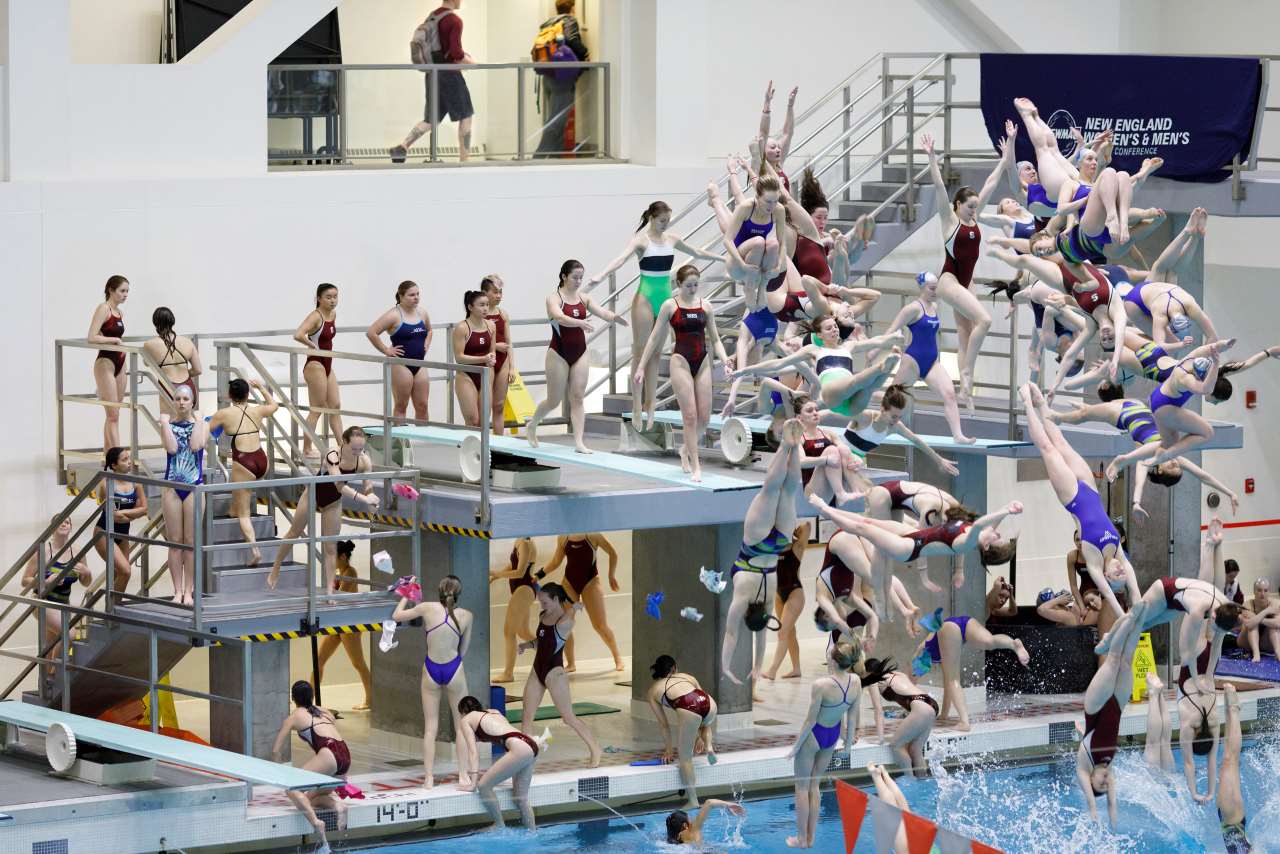
Pelle Cass, Dive Meet from Across Pool, MIT from 'Crowded Field Series', 2018, Cambridge, Massachusetts. © Pelle Cass.
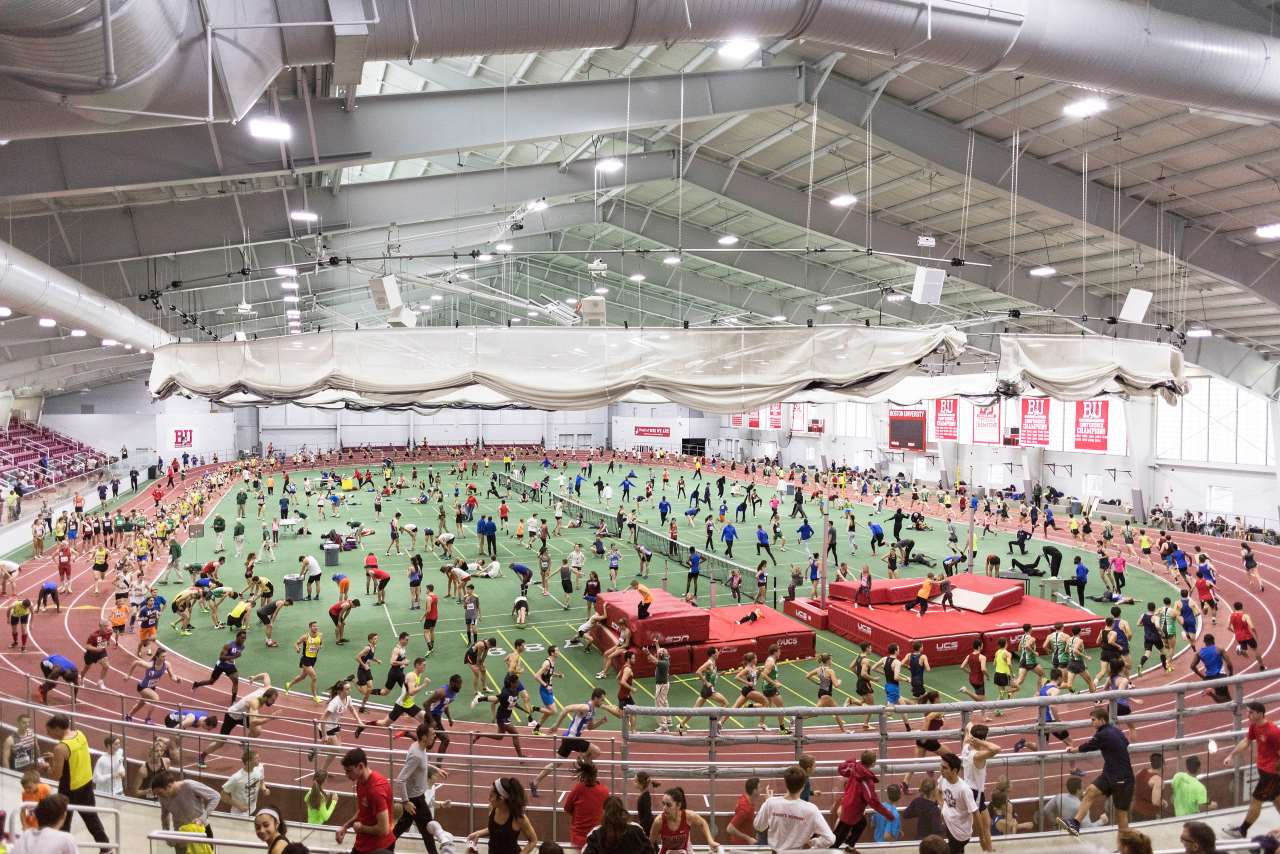
Pelle Cass, Track Meet, Boston University from 'Crowded Field Series', 2017, Boston. © Pelle Cass.
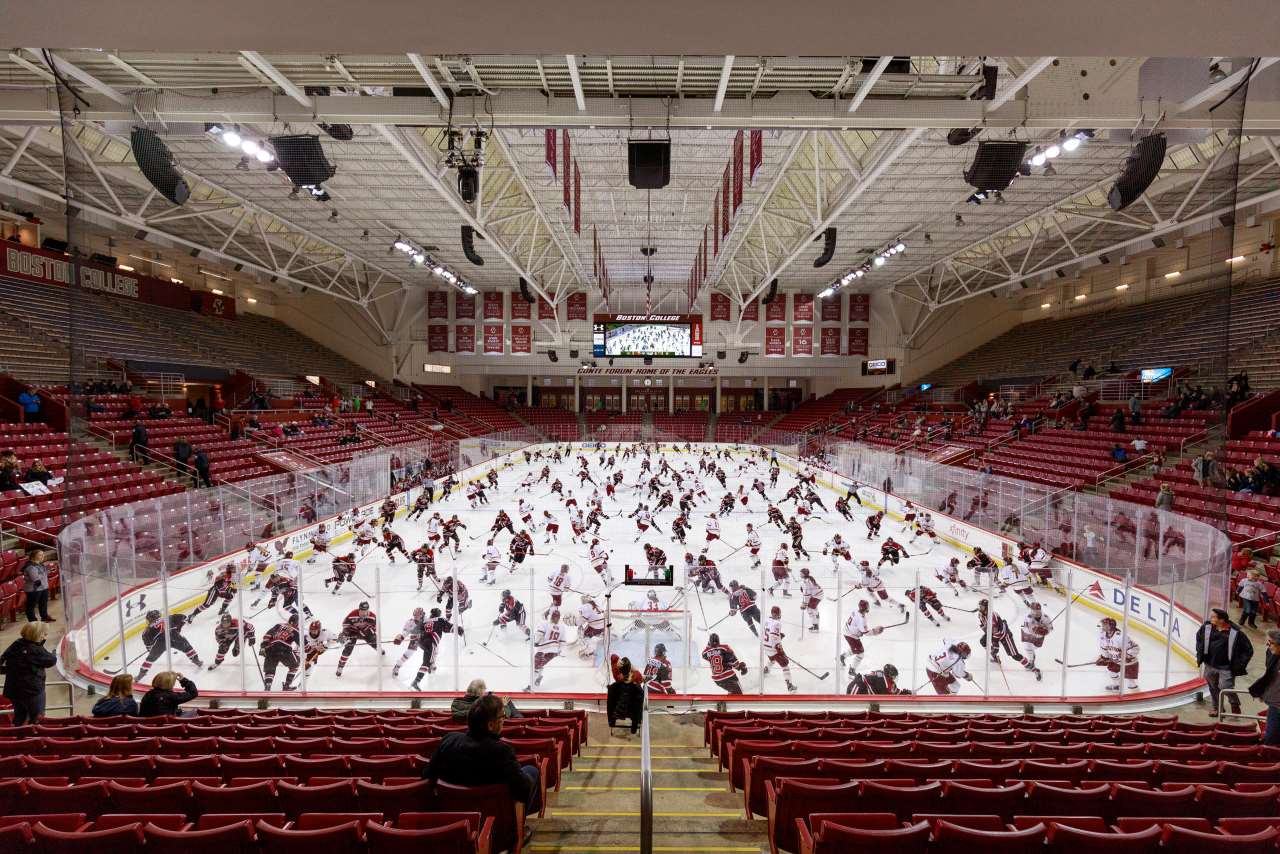
Pelle Cass, Women's Hockey Game, Boston College from 'Crowded Field Series', 2018, Chestnut Hill, Massachusetts. © Pelle Cass.
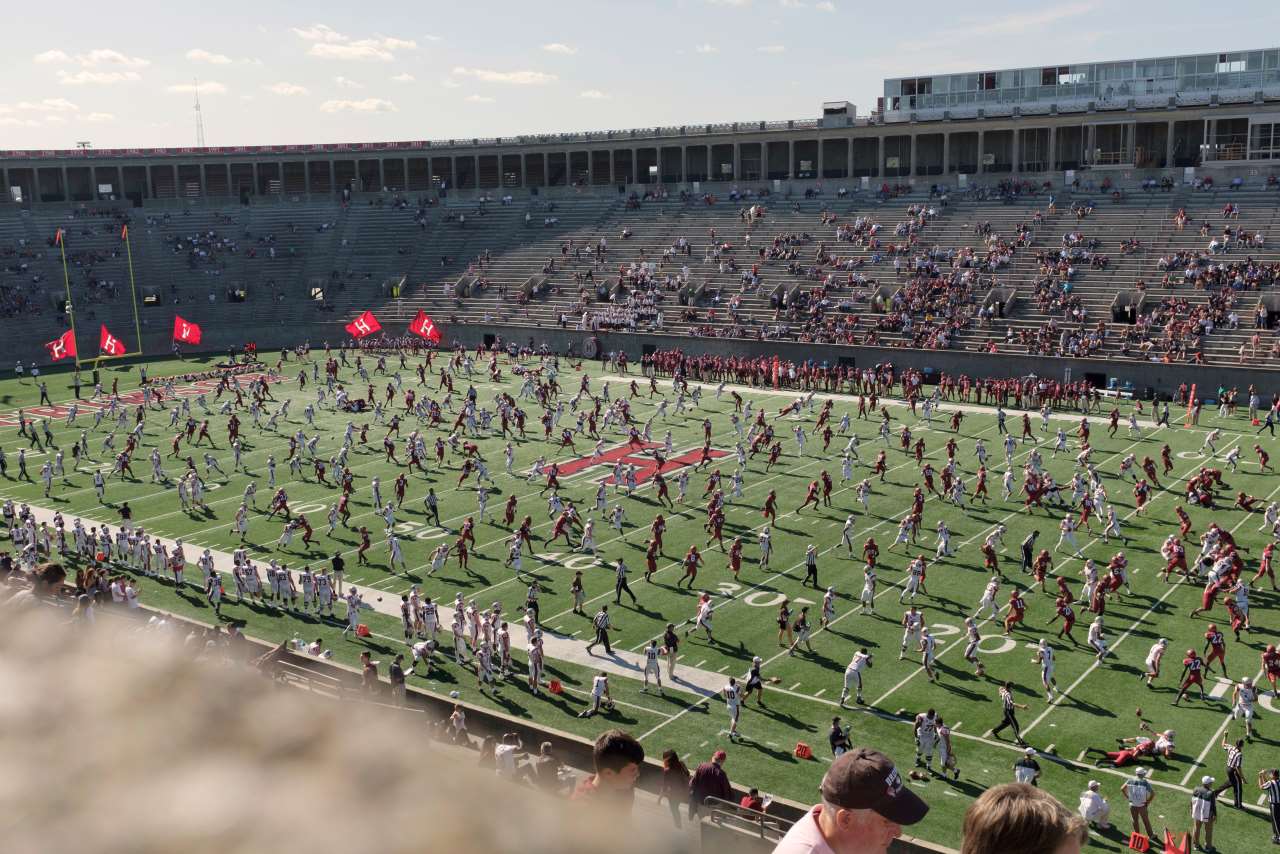
Pelle Cass, Football Game, Harvard from 'Crowded Field Series', 2017, Brighton, Massachusetts. © Pelle Cass.
Where did your passion for photography stem from? Did you always want to be a photographer?
My mother was an artist. Her drawings looked a bit like Picasso’s neo-classicist drawings from the 20s. But I couldn’t draw as a child—I was the kind of kid whose handwriting went up and down and rarely stayed on the line—but my family valued art, and even as a child I might have been called upon to play the critic and tell her whether or not her drawings were finished or if she should add another figure. So that’s definitely where it started for me.
When I was 13 a friend of the family gave me an old twin-lens reflex camera. I liked fooling around with it and a few years later I began to realize photography was my main interest. I learned techniques from reading every issue of Popular Photography and Modern Photography for several years, and I was lucky enough to go to a high school with a photography teacher who’d worked for Life and Look magazines. By then I was pretty hooked.
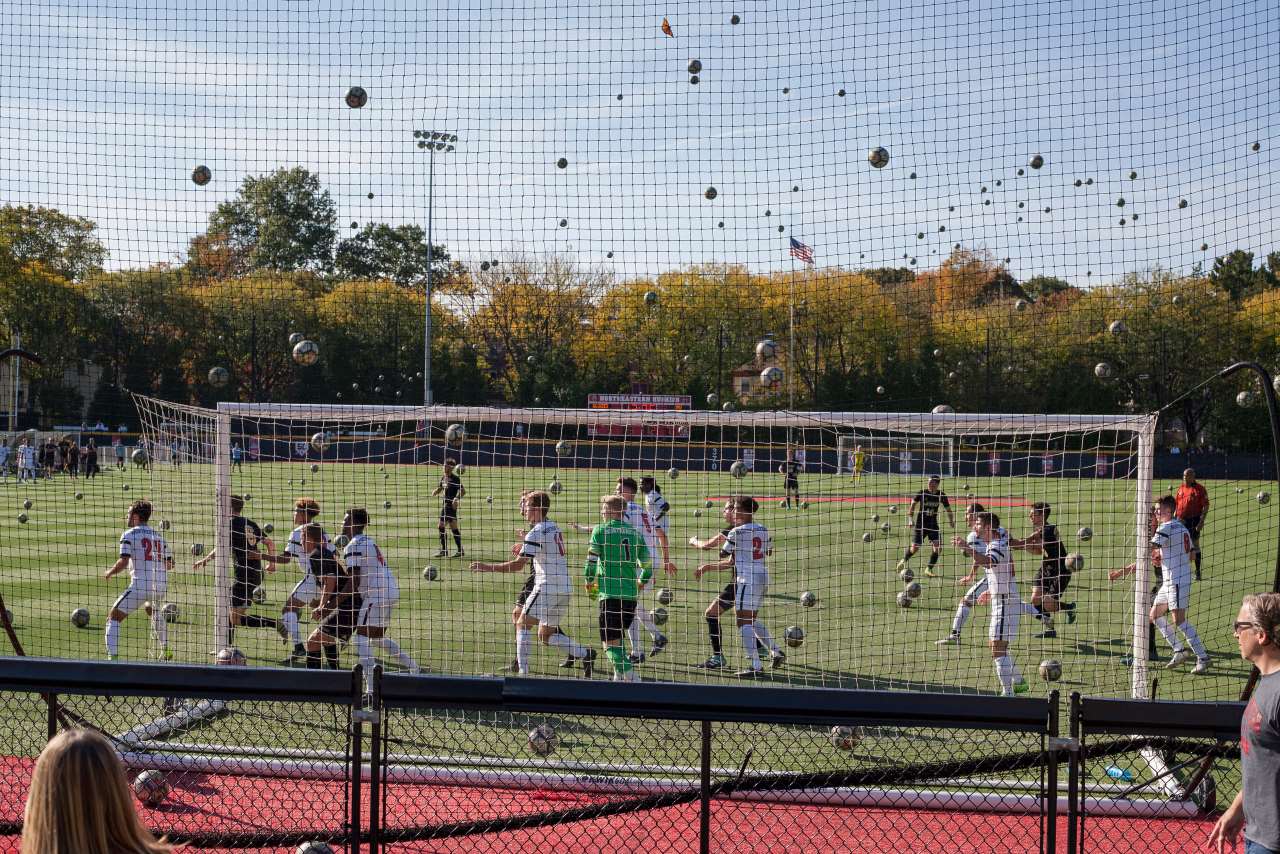
Pelle Cass, Soccer Game, Northeastern University from 'Crowded Field Series', 2017, Brookline, MA. © Pelle Cass.
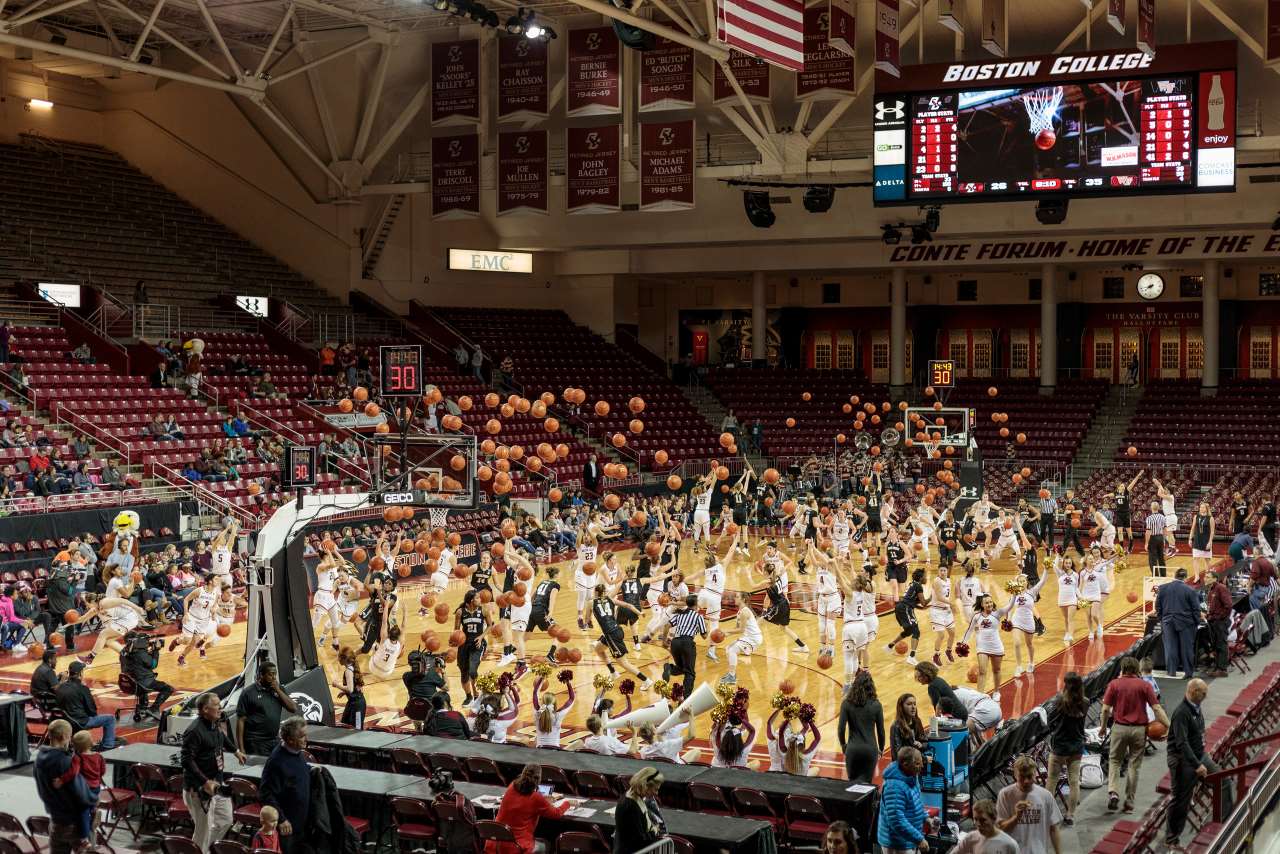
Pelle Cass, Basketball Game, Boston College from 'Crowded Field Series', 2018, Chestnut Hill, Massachusetts. © Pelle Cass.
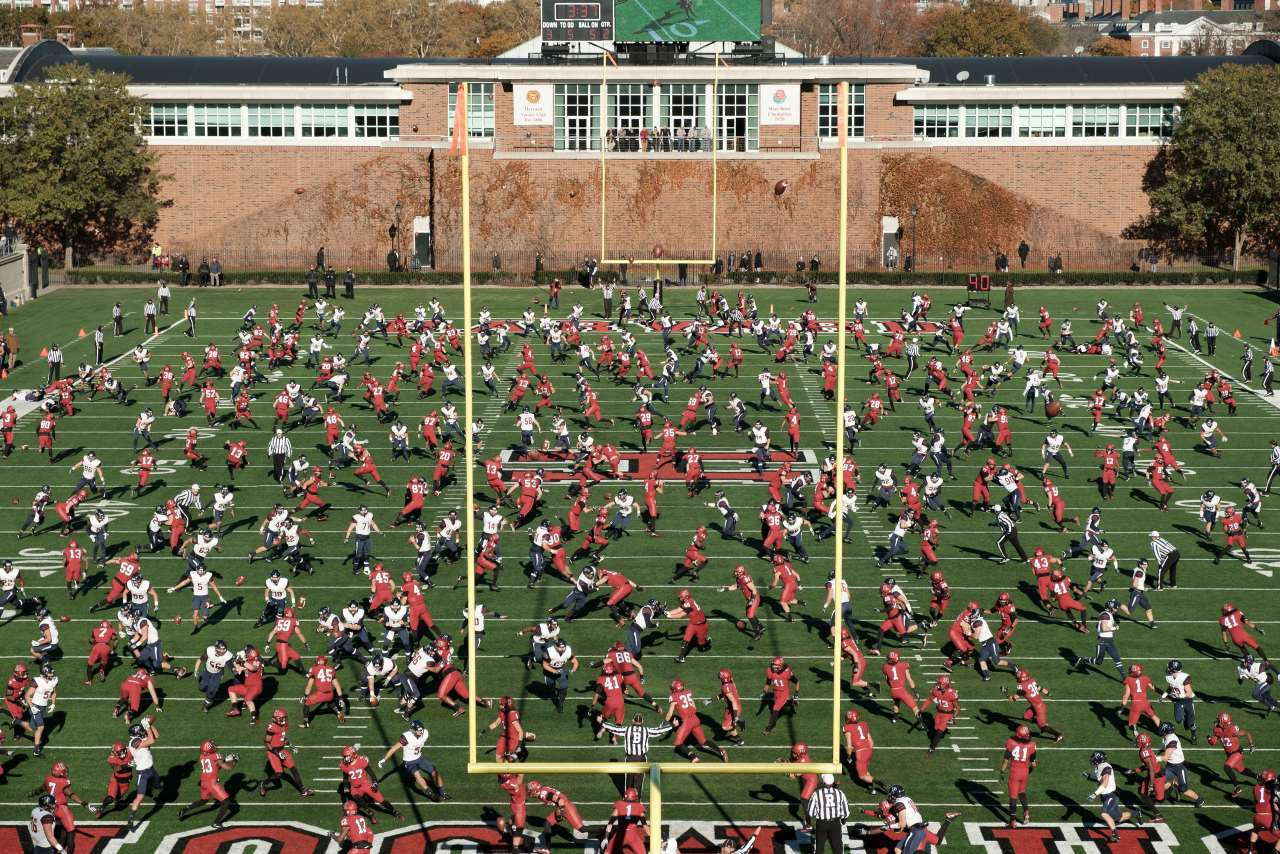
Pelle Cass, Football Game from End Zone, Harvard from 'Crowded Field Series', 2017, Brighton, Massachusetts. © Pelle Cass.
How did the concept of the 'Crowded Fields' series come about? Did it evolve as the logical next step from your 'Selected People' series?
Yes. Crowded Fields is an outgrowth of Selected People, my series of street photographs that use the same time-lapse technique to capture people moving around the streets and plazas of my hometown Boston. Such locations were mostly still and eerie, but sometimes kids would run through the frame or I’d photograph people playing in a park. I really liked the added energy and varied poses. It took me a while to figure out that it might be a good idea to concentrate on sports. I think I was a little afraid of seeming corny since sports is one of the quintessential subjects for photography.
When I received a commission to photograph an NBA team in 2015, the editors insisted I play it straight and not add too much of the kind of extraneous junk I love to put in photos so I kept the focus on the bodies and movement. It really worked. It took me a couple of years to focus on sports exclusively. It was really hard to get into an NBA arena, so that put me off a bit. A couple of years ago, I realized that college sports was the perfect solution. No one cared if I took pictures and there were only a few dozen spectators, even in a big arena. Women’s hockey at 2pm on a weekday is my idea of photo heaven!

Pelle Cass, Dive Meet, Boston University from 'Crowded Field Series', 2017, Boston. © Pelle Cass.
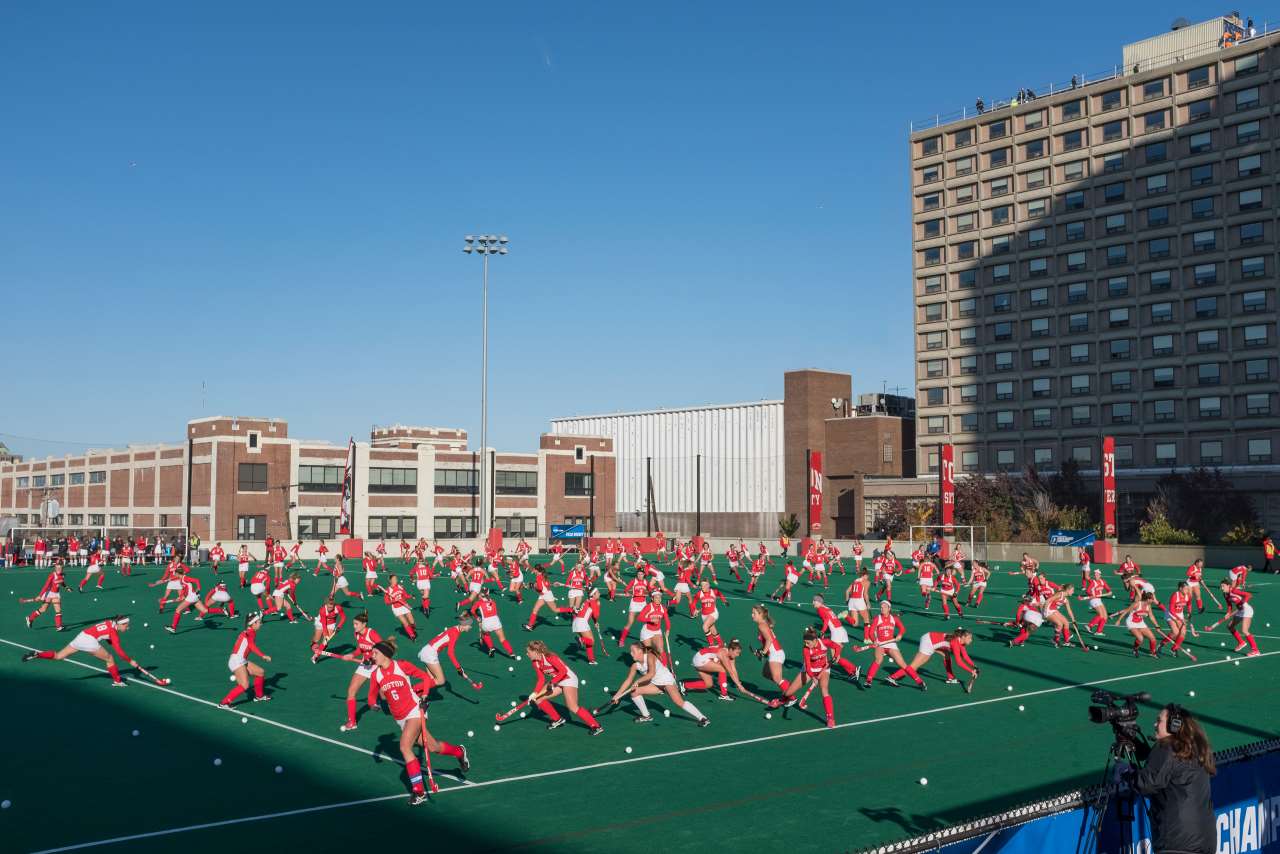
Pelle Cass, Field Hockey Game, Boston University from 'Crowded Field Series', 2018, Boston. © Pelle Cass.
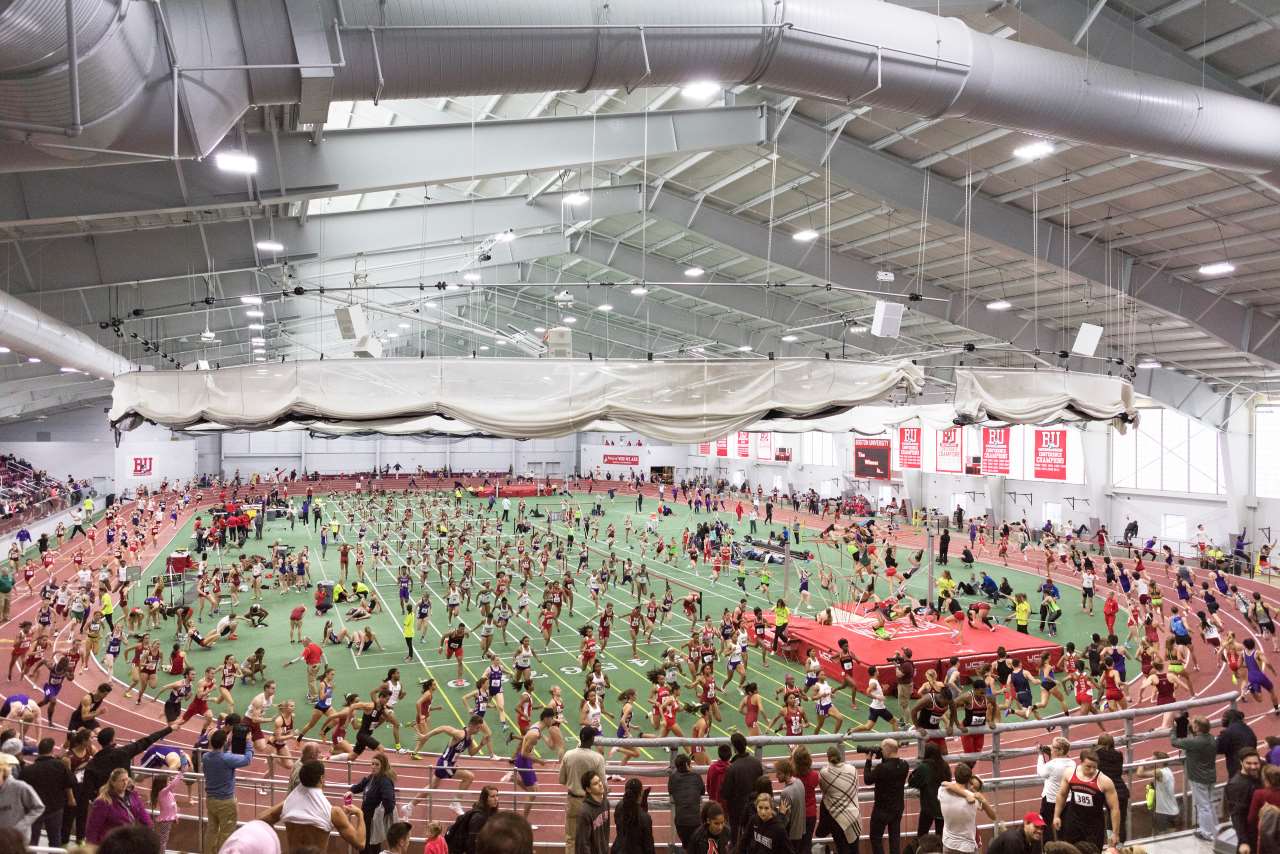
Pelle Cass, Track and Field Meet, Boston University from 'Crowded Field Series', 2017, Boston. © Pelle Cass.
There is something quite ironic in how you manage to turn individual sports like diving into team endeavours, and team sports into blowouts. Are you looking to poke fun or extol the sports that you’re depicting?
You’re right! It’s not making fun, exactly. It’s more of an irony, I suppose. I like turning the usual narrative of sports inside out. I don’t think you can tell who is winning or losing in my images. What I want you to notice is the play, not the competition. I’m not interested in the glamor of sports, the famous and the rich, I prefer small, unimportant events. I like to photograph women’s sports as much as men’s. It’s about Dionysian chaos, as a friend put it to me once, or a “fantastical digital shitstorm” as the curator Jon Feinstein has said.
How time consuming and painstaking is the process of creating one image? Do you spend most of the time shooting or on the computer?
Often, I photograph the whole event, so that’s a couple of hours. It takes me 20 or 30 hours to photoshop a simpler one and up to 80 hours for the most complex. Sometimes I try out a couple of different ways, so it can take even longer. When I’m working on it full time, I check the local college sports calendars on Monday morning and make a rough plan for the week. I might be out at Boston University for a half day taking pictures of diving and then later in the week, a lacrosse game at MIT.
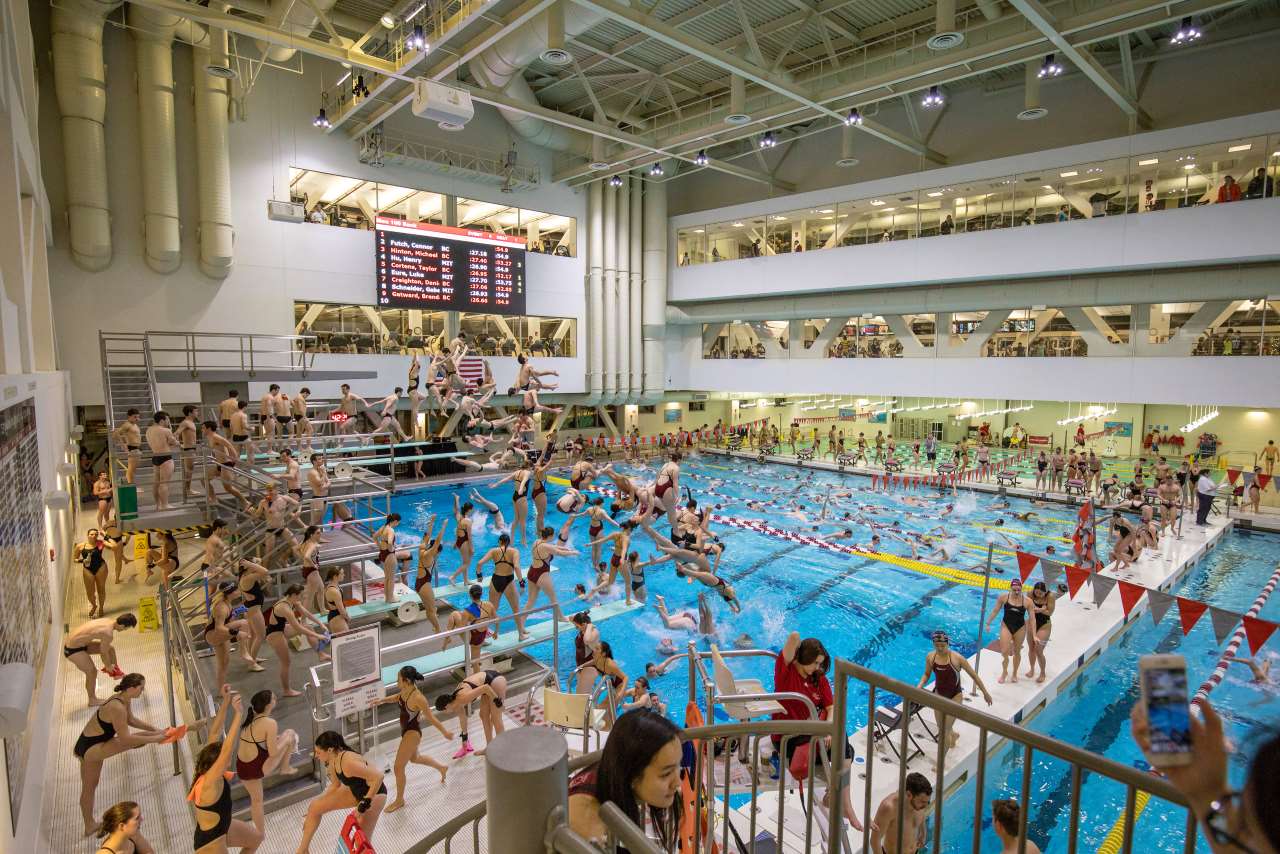
Pelle Cass, Dive Meet and Warm UPs, MIT from 'Crowded Field Series', 2018, Cambridge, Massachusetts. © Pelle Cass.
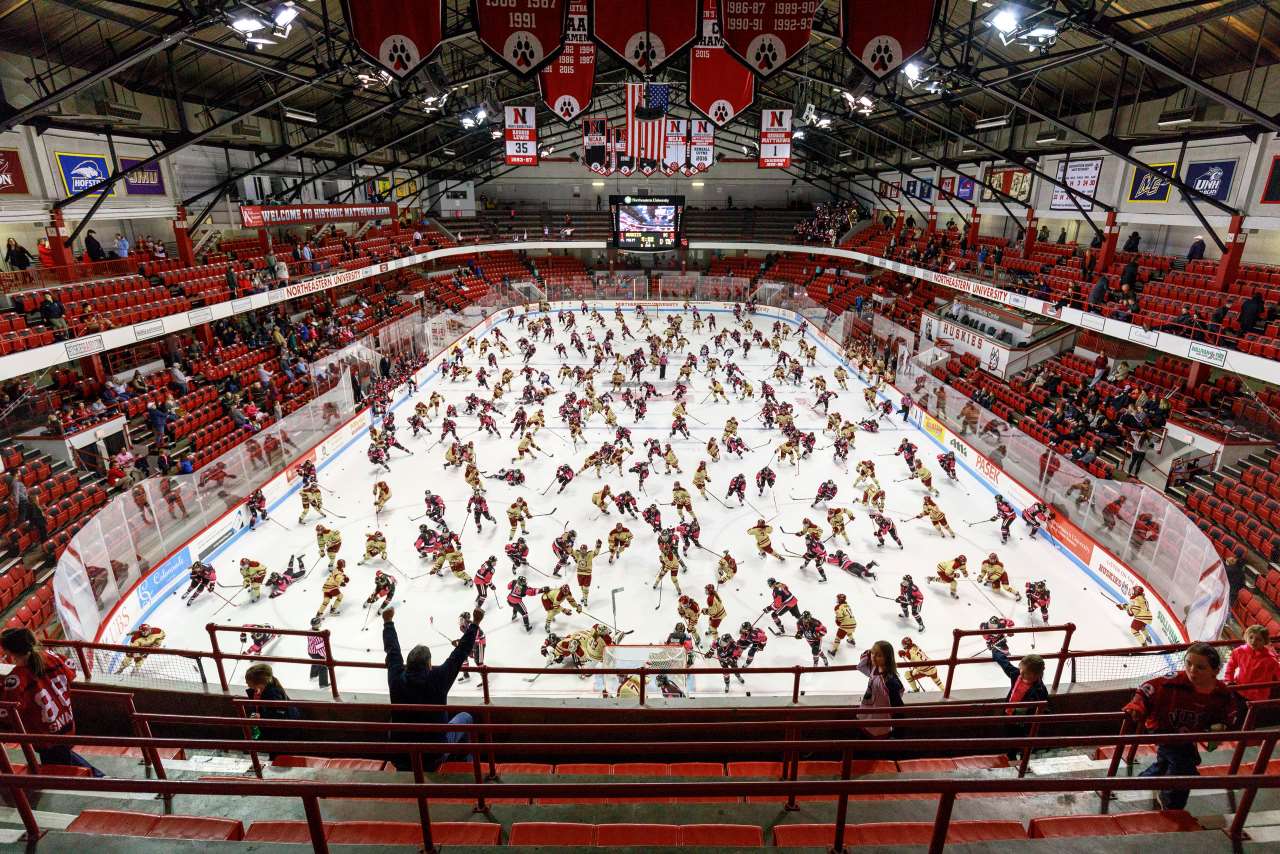
Pelle Cass, Women's Hockey Game, Northeastern University from 'Crowded Field Series', 2018, Boston. © Pelle Cass.
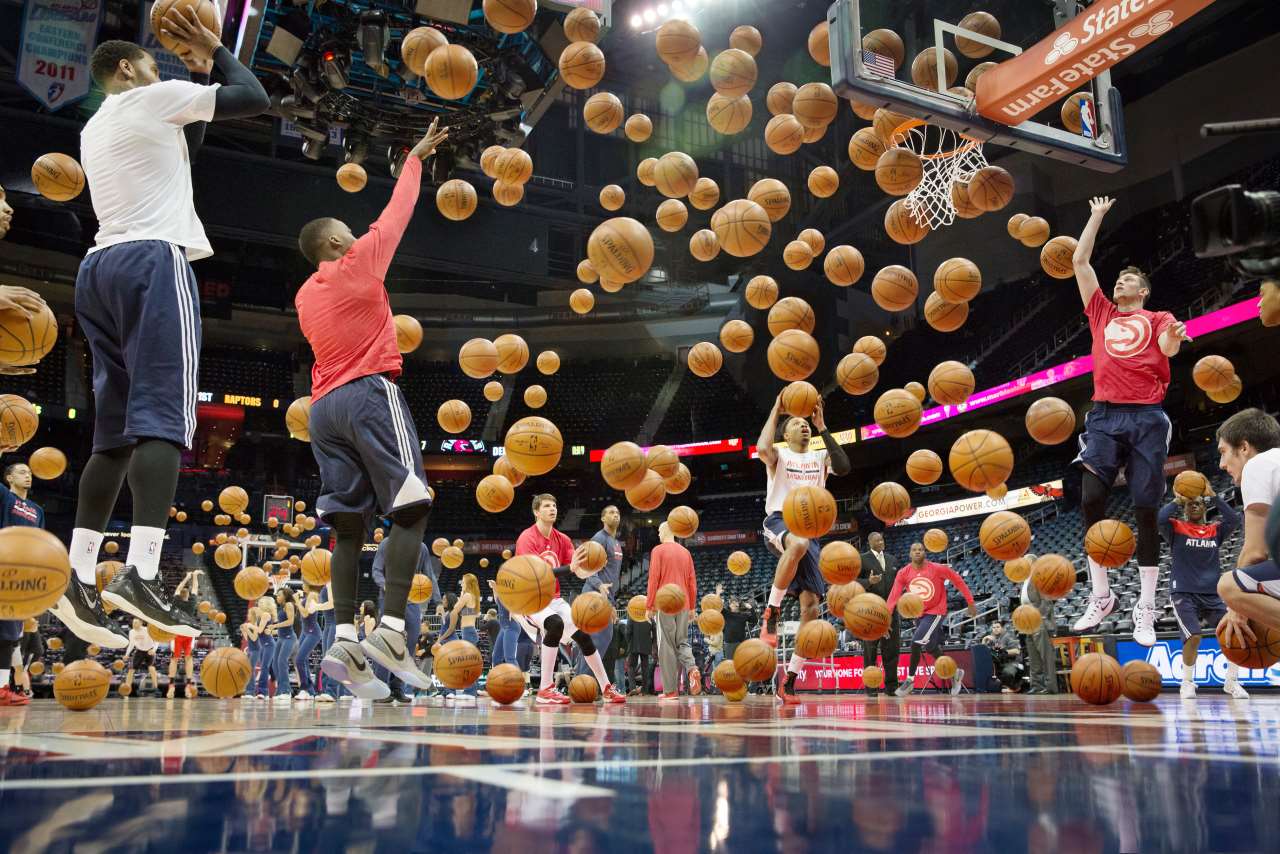
Pelle Cass, Atlanta Hawks II from 'Crowded Field Series'. © Pelle Cass.
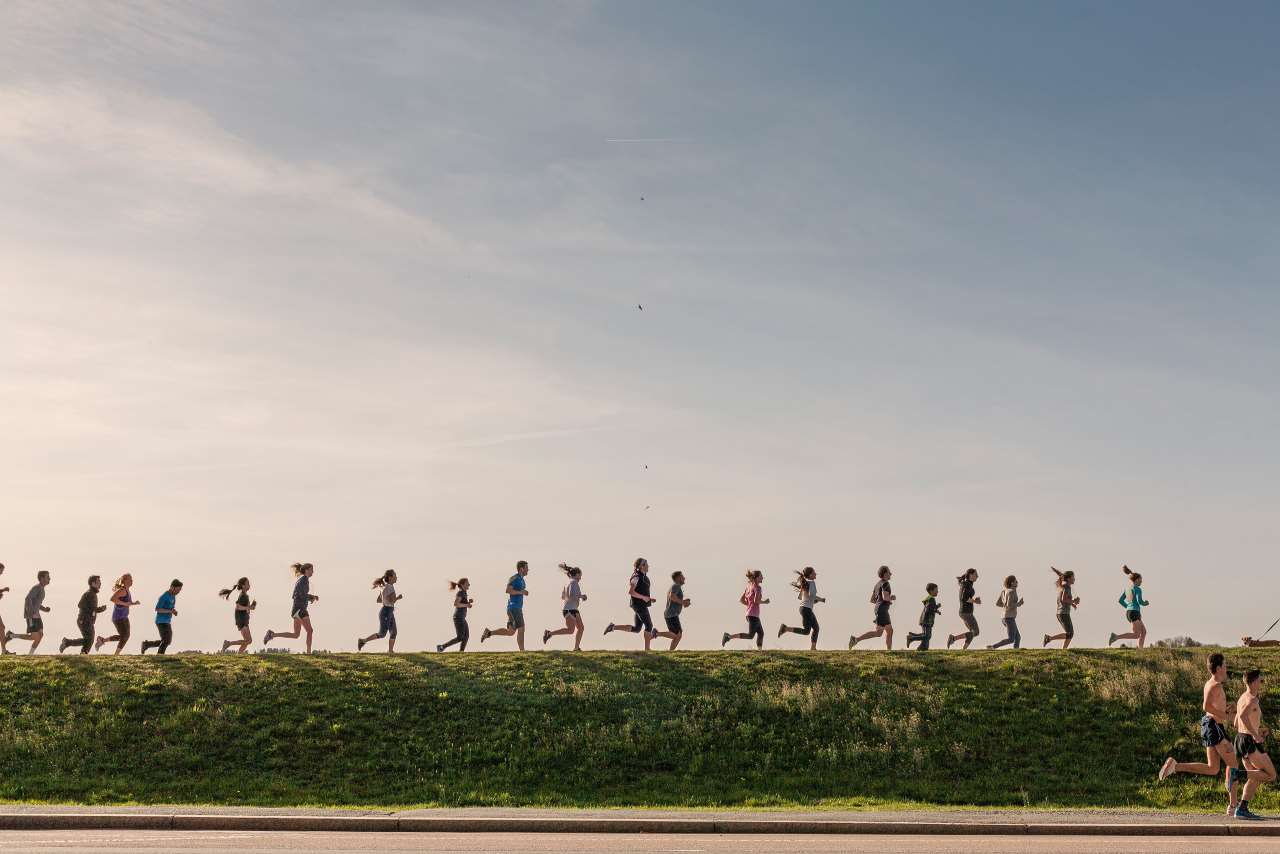
Pelle Cass, Chestnut Hill Reservoir from 'Crowded Field Series', 2016. © Pelle Cass.
Outdoor scenes in particular appear to be the most challenging since lighting conditions continuously change during the photo shoot. How do you work around this?
Bright sunshine is easy since it stays constant. I don’t care if the angles of the shadows change because that shows time passing, which is what these works are all about. Cloudy days are harder because even though you can’t see it by eye, the colour of the light changes and the intensity, too, minute by minute. So I often have to slightly lighten or darken figures so they blend into the background. Again, I don’t mind if the lighting seems a little different on one person or the other. But I don’t want distractions, either.
What criteria do you use when choosing a location, other than the locations being public sports facilities?
The main thing is that I can get at least a bit above the action, on a hillside or on bleachers. I’m not super-adventurous, so I like events that are nearby. I go by foot, bike, or public transportation. Luckily, Boston has tons of colleges.
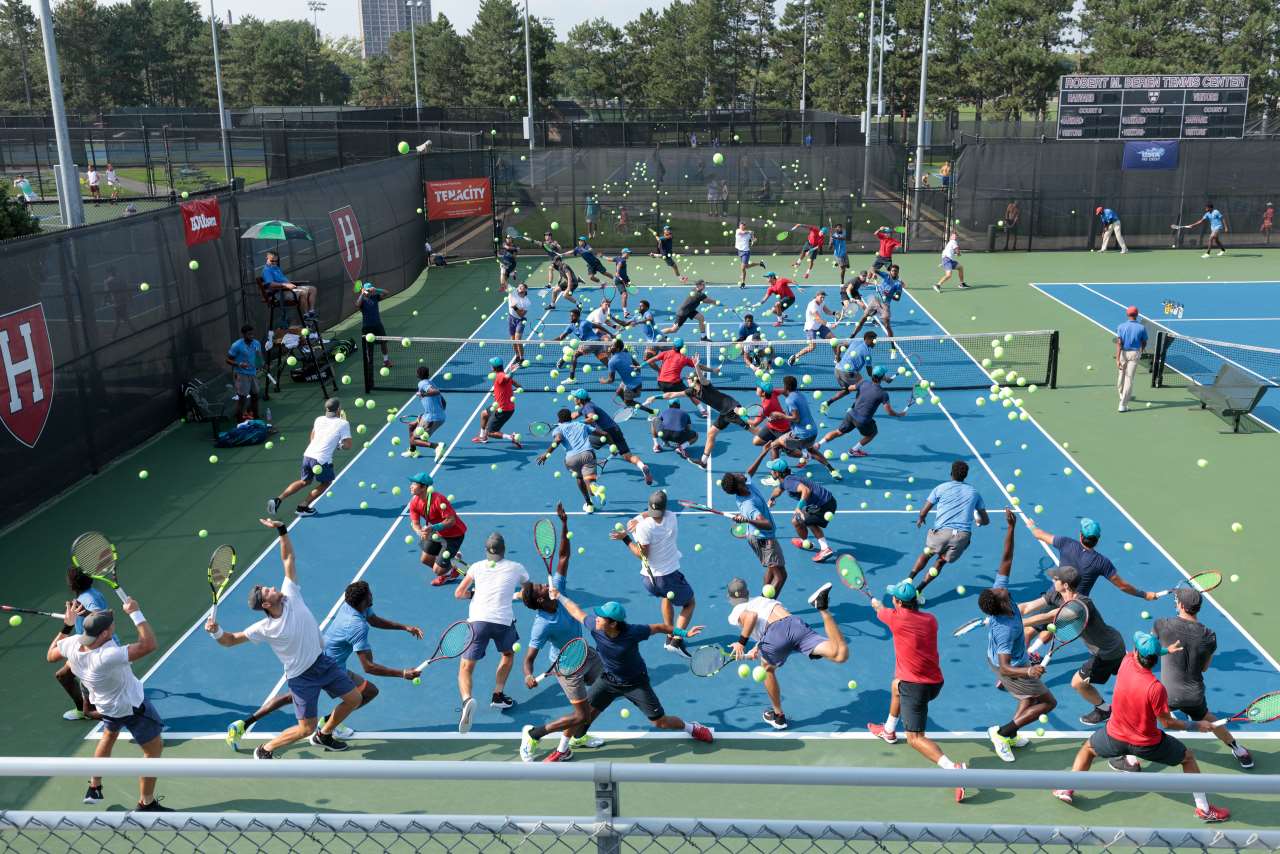
Pelle Cass, Futures from Baseline Ct6 Thurs from 'Crowded Field Series'. © Pelle Cass.
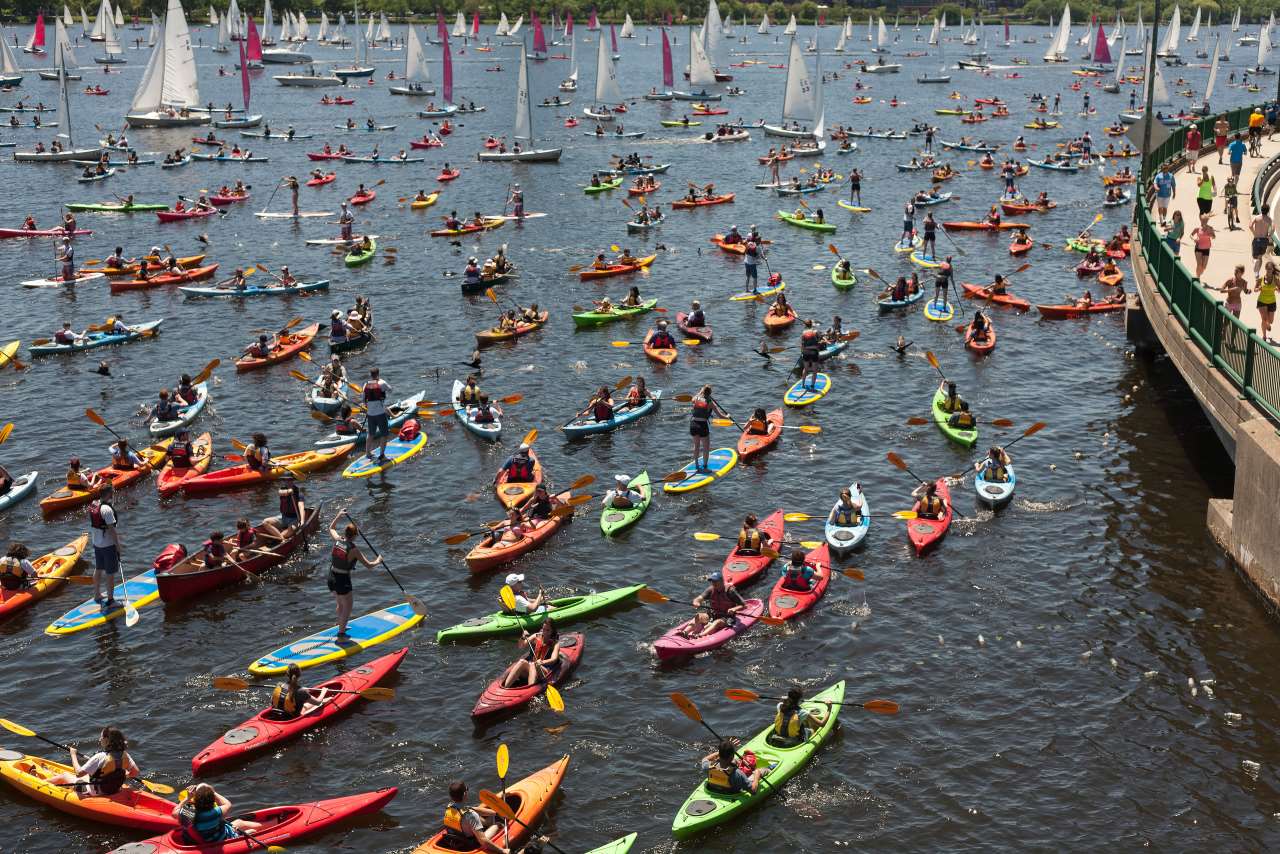
Pelle Cass, From Longfellow Bridge from 'Crowded Field Series', 2016. © Pelle Cass.
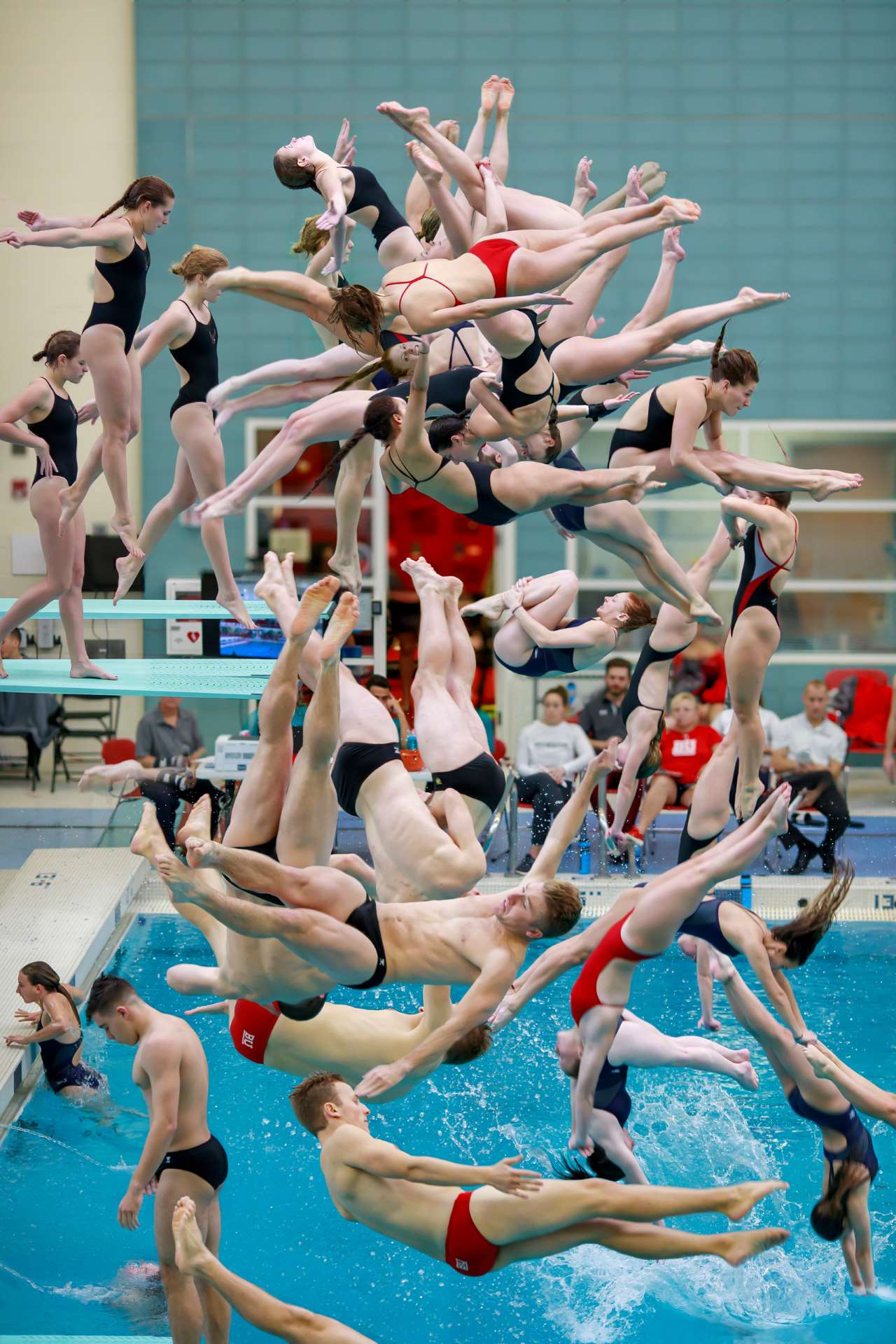
Pelle Cass, BU Terrier Dive Meet Day One from 'Crowded Field Series'. © Pelle Cass.
How do you decide how crowded to make each image? When do you stop adding more people? Do you stop instinctively or are there aesthetic or conceptual rules?
It’s a bit like a slow-motion game of Tetris as I start by adding one figure at a time. I usually try to fit in as many people as I can at first, then I pare back until the composition feels right to me. It’s mostly intuitive, but sometimes my brain will notice something like all the women shouting in the volleyball picture and I’ll compile them.
You have mentioned, in regards to the 'Selected People' series, that you strictly follow a set of rules in order to avoid being gimmicky. Does this apply to the 'Crowded Fields' series and if yes how so?
Yes. I use the same rules. I never move anyone for convenience or any other reason. Each figure is in its real, original position. I try to let a sense of chaos and imperfection into the work, especially because photoshop is more often used to perfect an image. I don’t crop except to correct perspective a little when needed. In other words, I’ve held on to some of the arbitrary rules of street photography that I learned as a student even though I think I’m making fun of street photography a bit, specifically in Selected People.
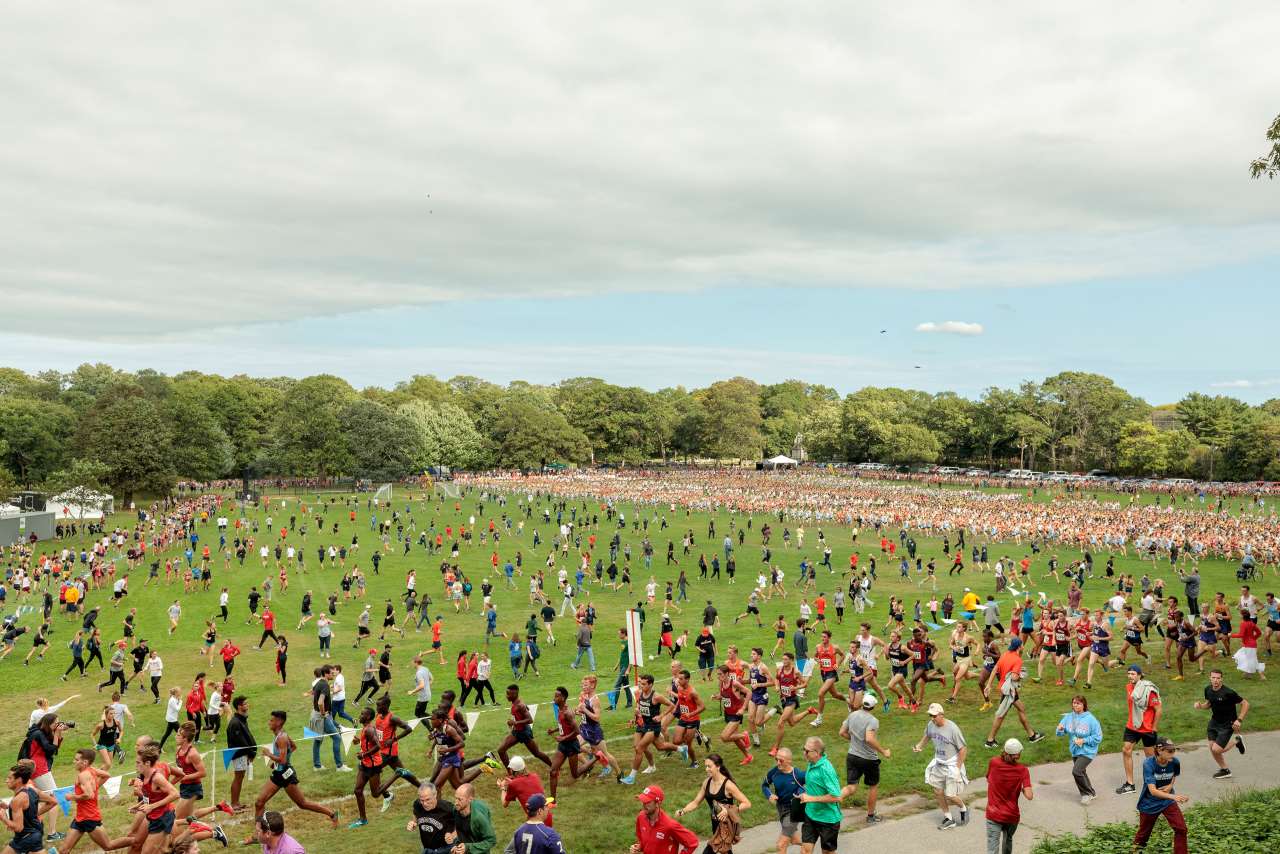
Pelle Cass, Franklin Field Cross Country from 'Crowded Field Series'. © Pelle Cass.
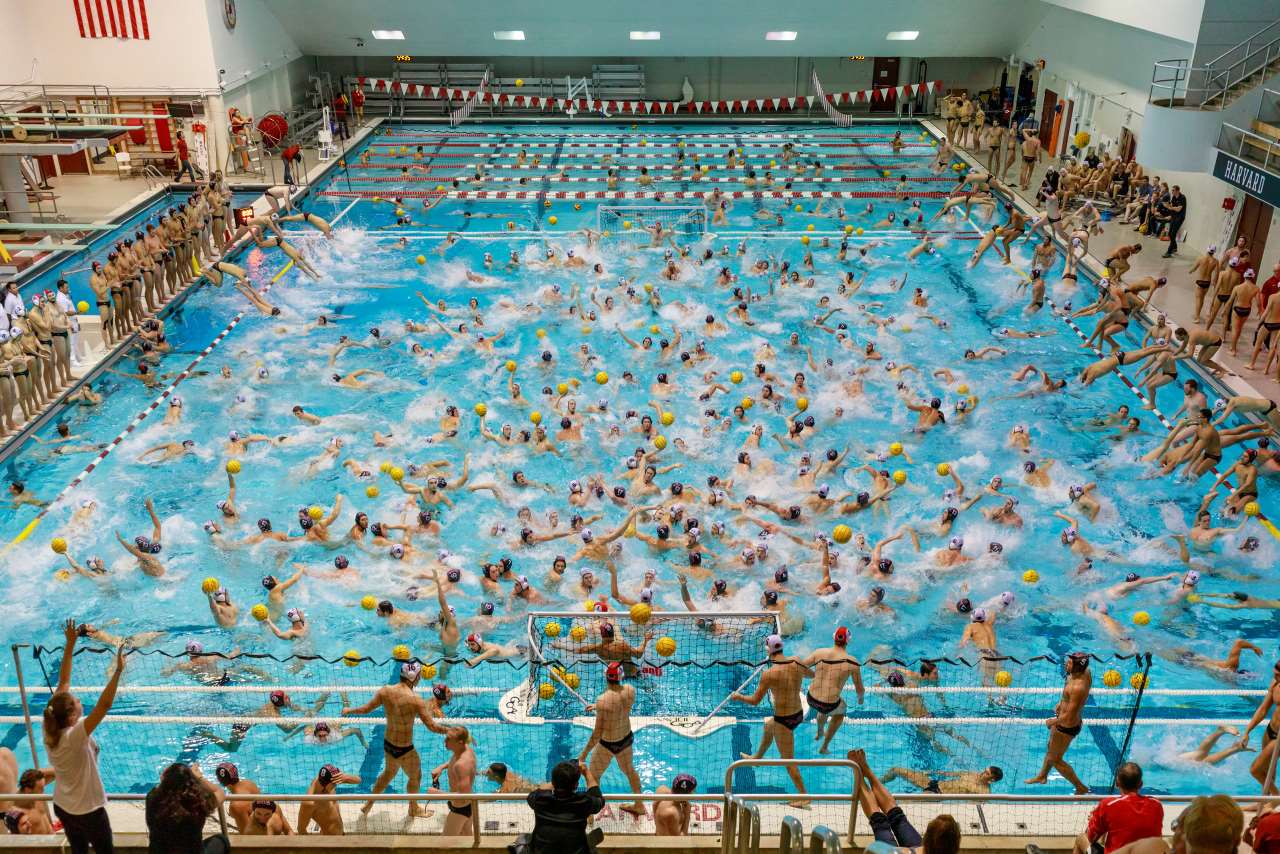
Pelle Cass, HU Men's Water Polo from 'Crowded Field Series'. © Pelle Cass.
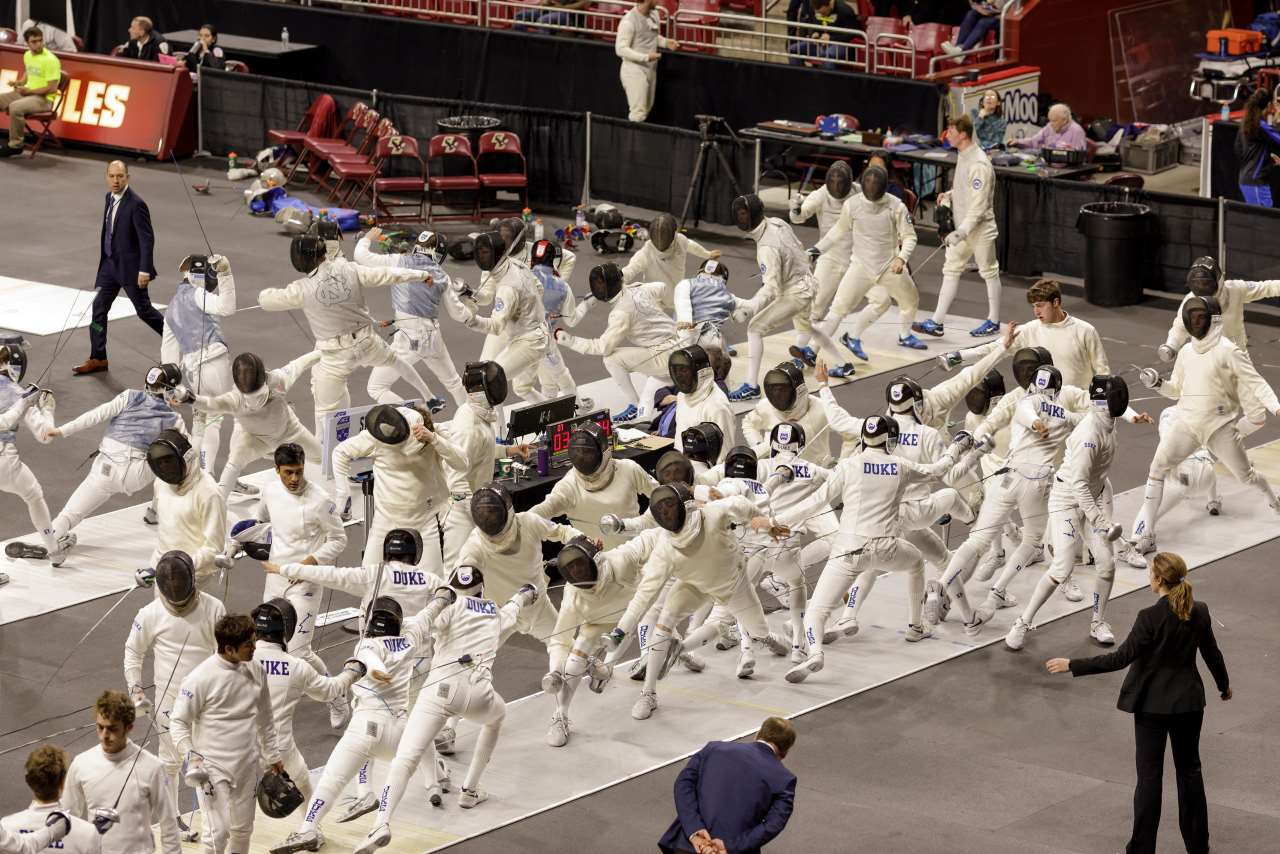
Pelle Cass, Men's fencing close up from 'Crowded Field Series'. © Pelle Cass.
There is something very geometrical in the set-up of your images. Some are clearly underpinned by a sense of symmetry or adhere to certain vectors, while others that appear chaotic, on closer inspection, seem to be intricately choreographed. What is the significance of this “accidental” orderliness?
I think you’ve described it beautifully! Accidental orderliness! Orderly chaos!
My sense of composition, in a way, is what the pictures are about. I have a strong urge to cram everything together and an equally strong urge to fit figures together so that each one somehow relates interestingly to the adjacent figures and that the spaces between them feel right. The more I work, the more I like having the figures smash into one another impossibly. I think I learned how to do this relatively recently. At first, I was committed to showing plausible space, configurations that could have happened in a single instant if I’d had the resources to pose all the figures. Now, I allow the figures to occupy the same space more and more and to move in closer. I want to let the chaos in.
What are you working on right now? Are you planning to expand the 'Crowded Fields' and 'Selected People' series?
I’m still doing Crowded Fields since, as I said I want to get closer and press more people together into a small space. Also, I keep receiving commissions to do more sports photos, which I’m happy to do. I’d like to do a book; the more different sports I can photograph, the better.
Looking a bit farther ahead, my thought is that sports offers a limited range of expression—striving, dynamism, effort—and that maybe something new could emerge by photographing dancers, actors, or models whose range of expression is far greater.
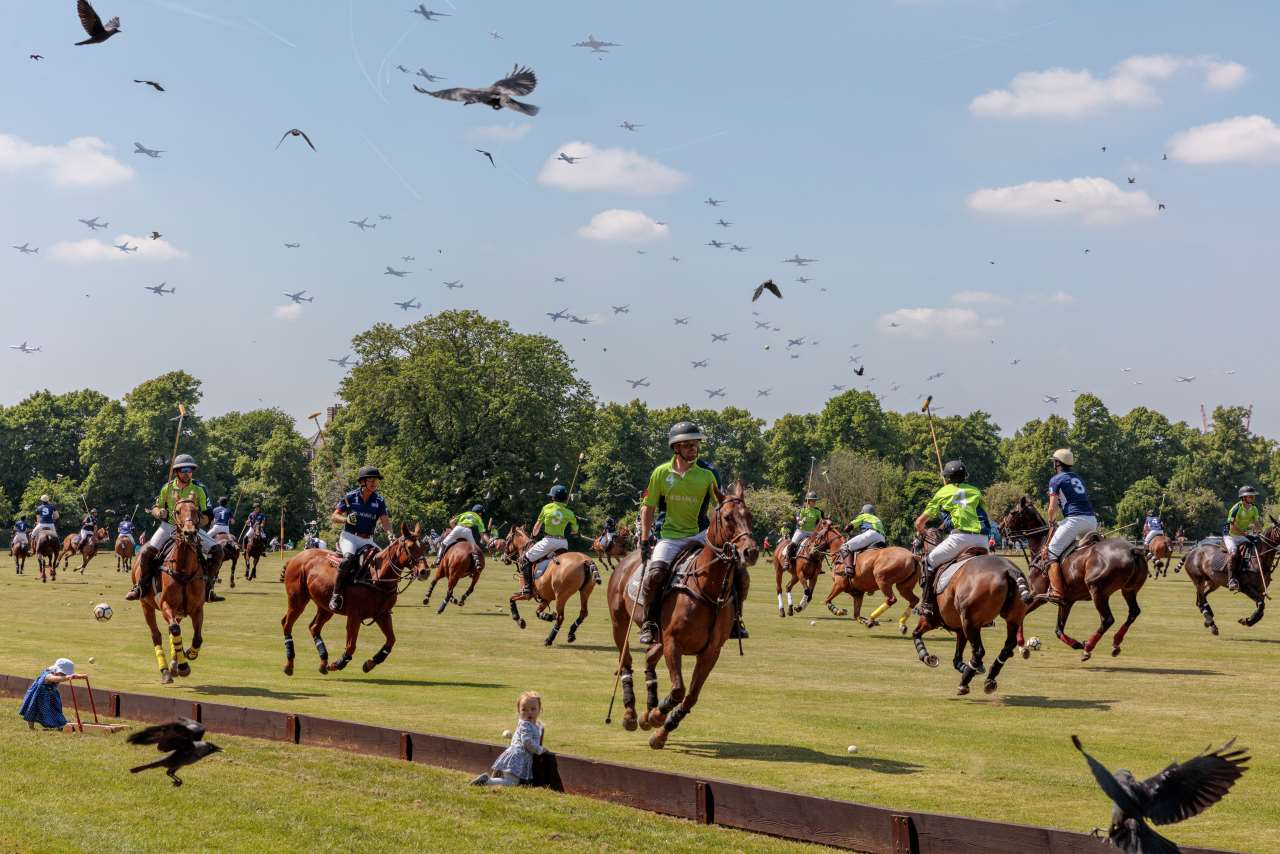
Pelle Cass, Ham Polo Club from 'Crowded Field Series'. © Pelle Cass.
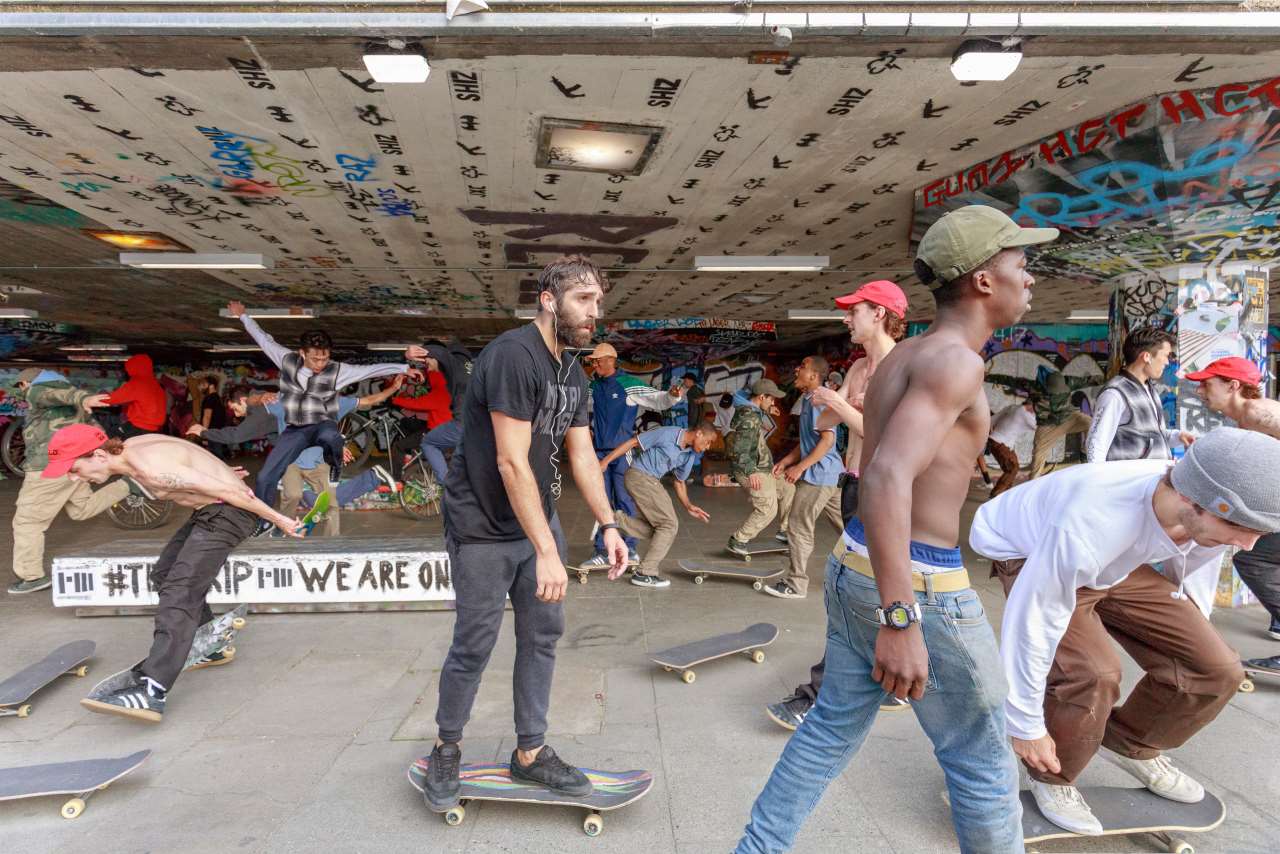
Pelle Cass, Skateboarders, London from 'Crowded Field Series'. © Pelle Cass.
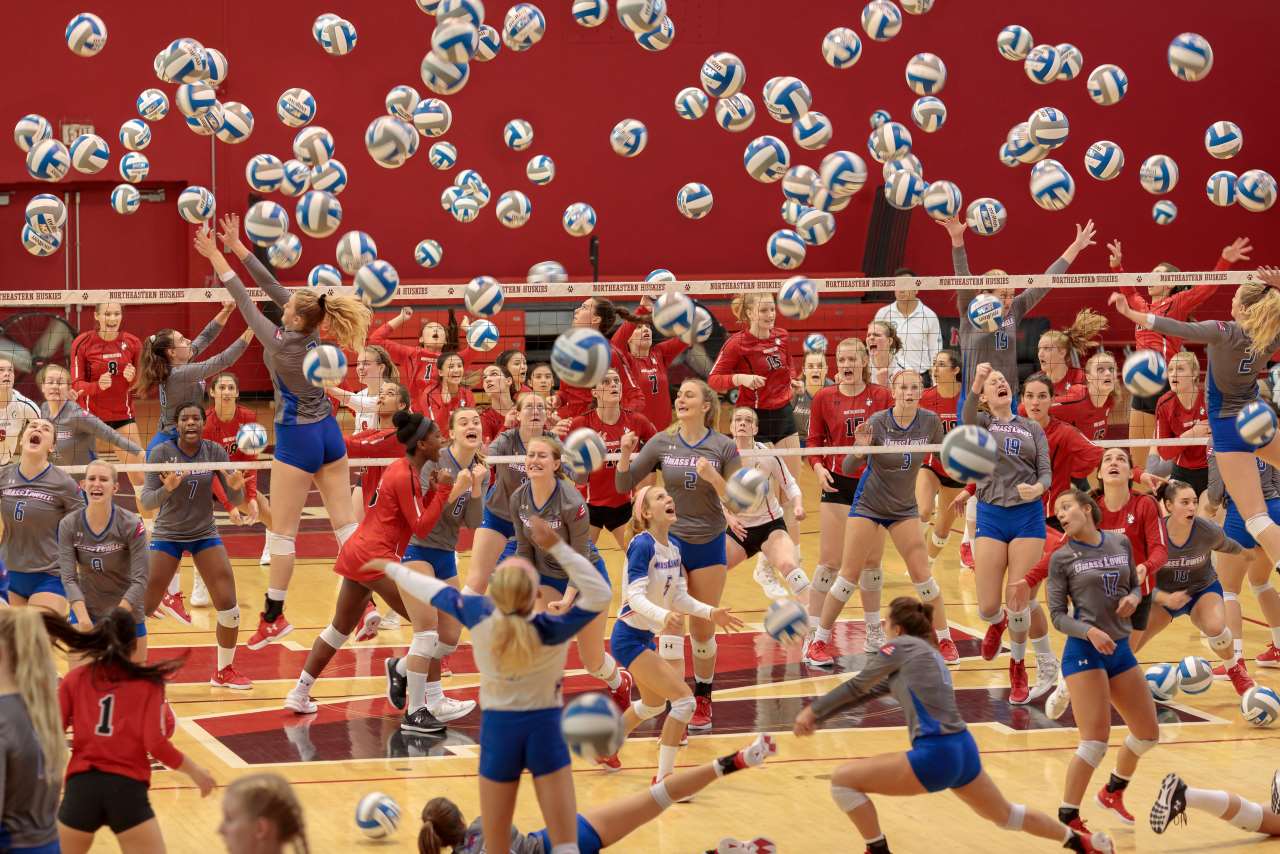
Pelle Cass, Volleyball at Northeastern University from 'Crowded Field Series'. © Pelle Cass.
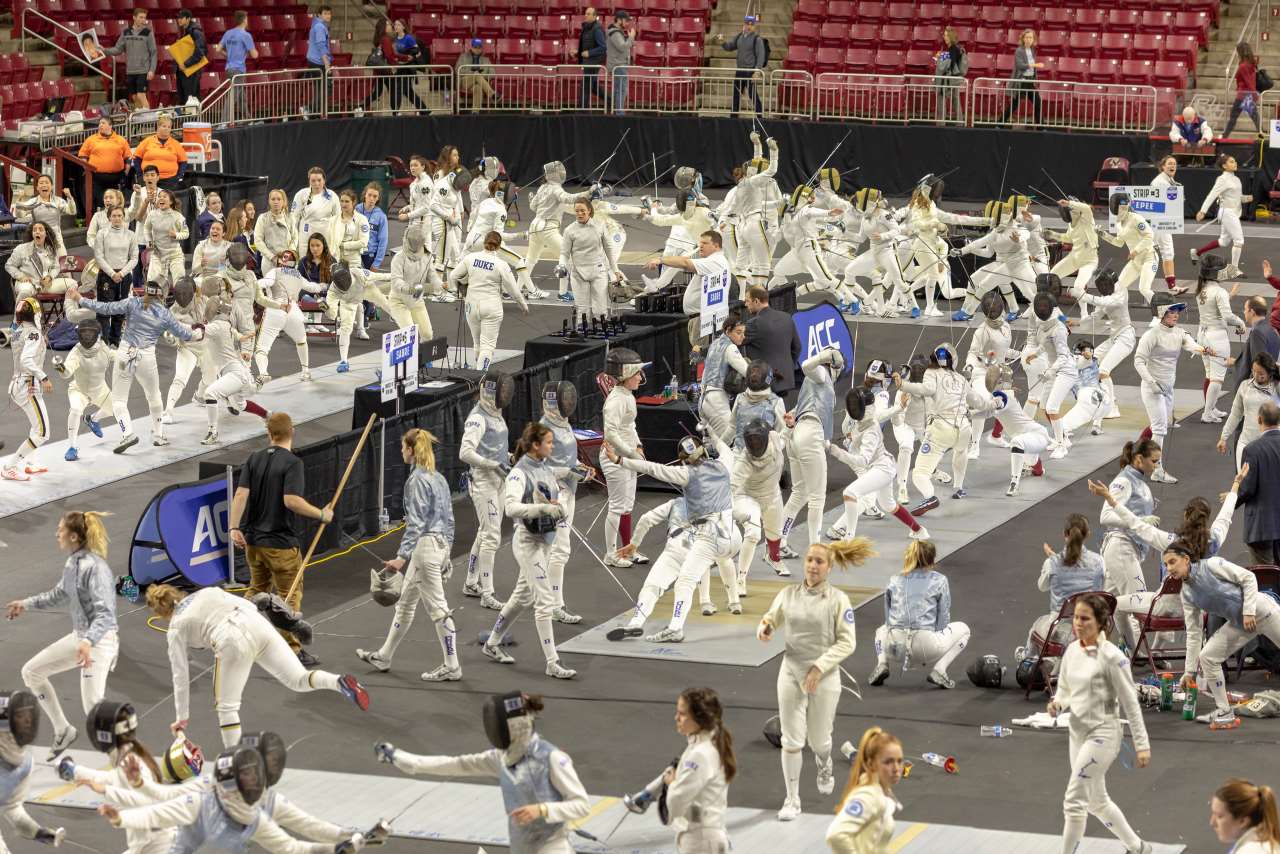
Pelle Cass, Women's fencing at Boston College from 'Crowded Field Series'. © Pelle Cass.















